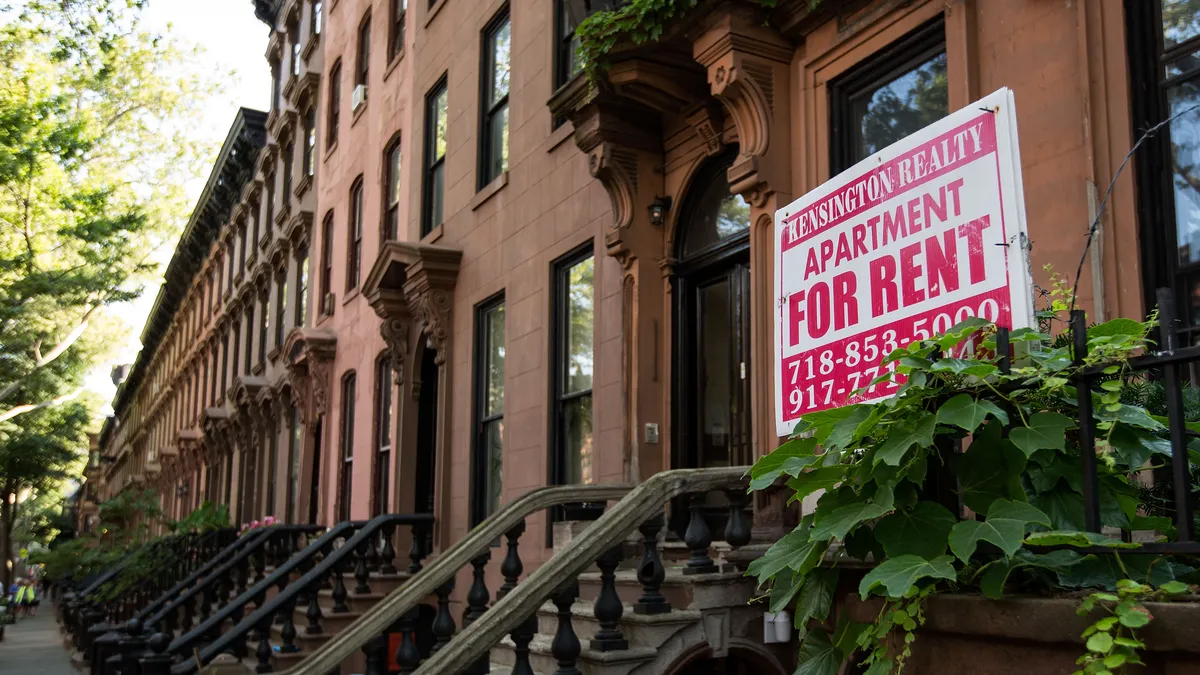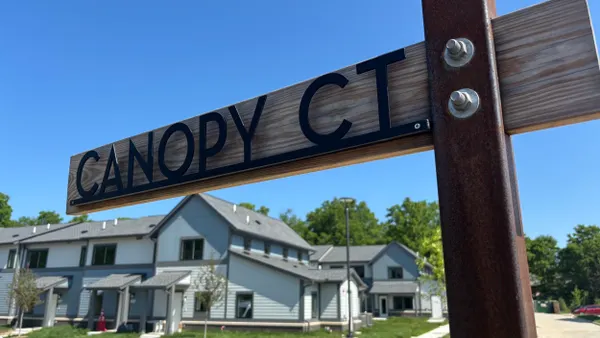Dive Brief:
- The national average asking rent is still on the rise, up $19 to a new all-time high of $1,706 in June. However, the rate of rent growth is decelerating, down 50 basis points to 13.7% year over year. Overall, YOY rent growth has fallen 130 basis points from its peak in February 2022, according to Yardi Matrix’s latest multifamily report.
- Rent growth remains strong in the most populous metros, with 25 out of the top 30 reporting YOY growth of over 10%. Three Florida cities – Orlando, Miami and Tampa – continue to lead the way, each with YOY rent growth of over 20%.
- While the U.S. economy is expected to contract in the second quarter, Yardi anticipates that rents will continue to increase, but at slower rates. At the same time, inflation and rising interest rates are expected to push more households away from the for-sale market and into apartments and single-family rentals.
Dive Insight:
While rents continue to rise in major Sun Belt and West Coast metros, slowing migration and household formation have led to a drop in occupancy rates in markets like Las Vegas (-1.6%) and Phoenix (-1.1%).
At the same time, occupancy is recovering in gateway markets that saw population loss during the pandemic, including San Jose, California, (2%) and New York City (1.5%).
Out of three demand drivers — household formation, immigration and migration — household formation had the strongest impact on rent growth and occupancy in 2021, according to Yardi. After living with family and friends during the start of the pandemic, many people moved out to form new households in 2021, leading to a surge in the “headship” rate, according to the San Francisco Federal Reserve.
Foreign immigration has fallen over the last five years, owing both to tightened immigration laws and to the pandemic. At the same time, while many remote workers did migrate to less expensive market in 2021, Yardi notes that, since the first quarter of 2021, rents and new unit absorption have risen almost everywhere, making workers’ target markets much less affordable. Some, including Denver; Nashville, Tennessee; and Austin, Texas, have lost households as prices have gone up.
For single-family build-to-rent communities, the average asking rent rose $23 to $2,071 in June, while YOY rent growth fell 90 basis points to 11.8%. Orlando remains the most powerful market for BTR rent growth, pushing far ahead of other top metros at 46.7% YOY.
Despite this growth, occupancy in the sector is variable. Single-family BTR occupancy fell 10 basis points over the last year nationwide, and occupancy rates only rose in eight BTR markets tracked by Yardi Matrix. Occupancy remained flat in high-performing Orlando, while Raleigh, North Carolina, saw the steepest drop at over -5%.












